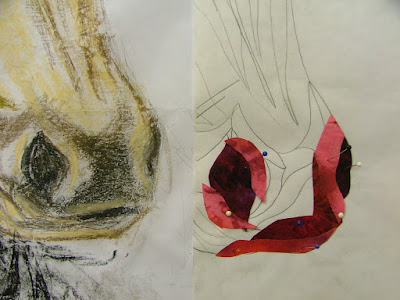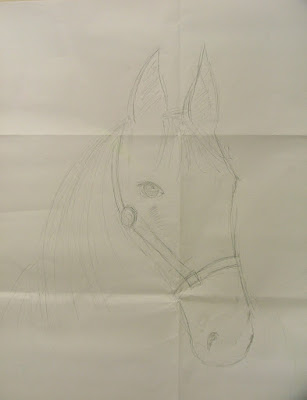More on the Little Ted quilt this week.
The quilt itself will look like a big 9-patch, with 5
patchwork blocks and 4 Little Teds. I need to set up a production line now to
make the Little Teds but first I need some more batting squares. Because it has
been snowing on and off all week, I have been unable to get out of the lane
onto the road to buy extra batting. So I have pulled out my off-cuts and
decided to join small pieces together. (This is the joy of always using the
same cotton batting (Warm and Natural) over the years; I have lots of off-cuts!)
Using batting
off-cuts: I over-lap 2 edges of batting large enough for my needs and cut a
straight edge along a ruler with a rotary cutter. Once I have removed the
trimmings, I am left with 2 edges that are the same. I butt them together and
use a swing stitch and a neutral thread on my machine to sew them together. This
can also be done by hand with a close stitch for added security. (If you
over-lap the edges you will get a ridge which will show through the fabric.)
Production line
If you recall, I used a non-template method and invisible
thread to applique the shapes, and the pattern was transferred onto the front using
a piece of calico on the back. The edges now need to be secured in some way and
the invisible thread needs to be camouflaged. Rather than do this with a satin
stitch as I normally would, I decided to make the bear furry and scribble
around the edges. I practiced on a sample first, liked it and just did it. And I
love the effect!! The edges around the bow were sewn with a small satin stitch.
Furry coat
From the back I have trimmed away the excess calico ready for
adding a backing square.
Trim the calico
And now for the quilting: I used a neutral thread and a
free-motion stitch to fill in the areas around Little Ted. Here are the 4
patterns I used. I always practice them with pencil and paper first because I need
to get the rhythm of the patterns into my head before they magically appear at
the needle.
(If you don’t practice this skill, you can’t expect to get
better at it. Leave your machine out and set up for free-machining. Sit at it
for 10 minutes every day and it will click in the end … a glass of wine helps
you to relax and makes it a very pleasurable experience too!!)
Quilting patterns
The ready-quilted blocks were joined together using the
method I have outlined in previous blogs, with a 1” strip on the front and a 1 ¼”
strip on the back. It was bound with a double binding. All it needs now is a
signature and a label before it is wrapped up for the lucky recipient,
Elizabeth Grace, if she did but know it at 5 weeks!
Finished Little Ted quilt
































